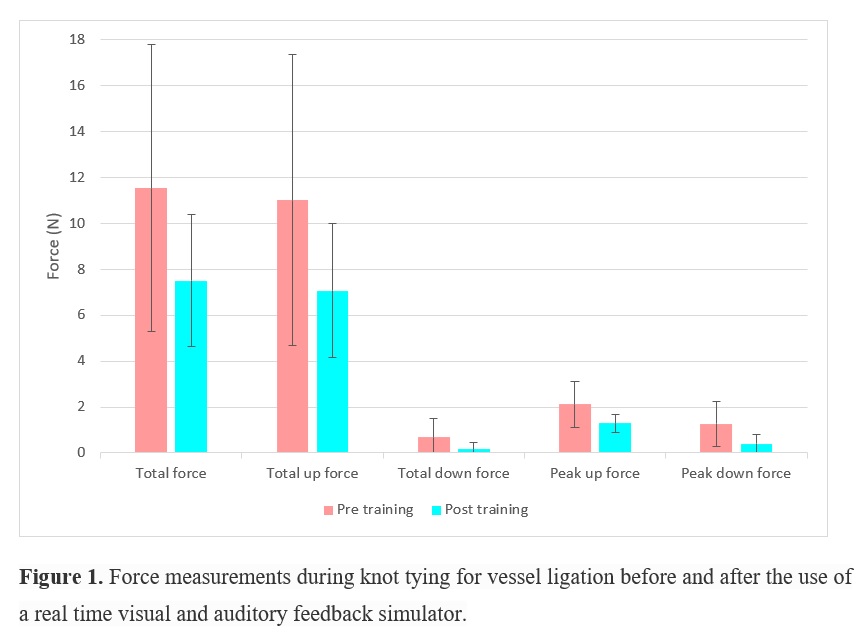PS8-06: NOVEL VISUAL AND AUDITORY FORCE FEEDBACK SIMULATOR FOR HONING KNOT TYING CAPABILITIES OF SURGICAL RESIDENTS
Roi Anteby, BS1, Moti Cordoba, MD2, Shlomi Laufer, PhD3, Roy Mashiach, MD2, Mordechai Gutman, MD, FACS2, Imri Amiel, MD2; 1Tel Aviv University, 2Sheba Medical Center, 3Technion - Israel Institute of Technology
Background: Delicate knot tying for vessel ligation is a skill acquired through trial and error, with feedback consisting of either lack of efficient closure or tissue avulsion. We developed a simulator that represents the task of tying a knot for vessel ligation and incorporated a force feedback feature. We evaluated the knot-tying capabilities of surgical residents before and after a deliberate practice session with the simulator.
Methods: A novel bench-top simulator, with computer-assisted analysis, measuring forces exerted during knot tying was tested on surgical residents at an academic medical center between 2017-2018. Real time visual and auditory feedbacks were given to trainees when excessive vertical force was used, relying on an expert-based threshold. During a designated training session, participants were instructed to practice until performing five consecutive knots within the aimed force. Pre and post training tests included tying 12 knots without feedback. Outcomes compared between the two tests were the total force exerted during knot tying, maximum pulling and pushing forces and completion time.
Results: Fourteen surgical residents, postgraduate year (PGY) 1/2, participated in the study. Trainees had a self-attested prior clinical experience of tying 50 to 100 knots. The mean time to reach proficiency in the simulator during the training session stood at 11:26 minutes, with a mean of 15 consecutive knots. After training with feedback, the mean total applied forces for each knot stood at 35% less when compared to pre-training measurements (7.5 vs. 11.54 Newton (N), respectively, p = 0.039), with no statistical difference in completion time (18.9 vs. 20.7 seconds, respectively, p = 0.22). The mean upward peak force during knot placement was significantly lower in the post-training test compared to the pre-training test (1.292 vs. 2.12 N, respectively, p = 0.004).
Conclusions: Visual and auditory force feedback improve knot-tying skills for vessel ligation, indicating that our simulator is an effective tool for training novice surgeons. Moreover, the simulator can be used by residency programs to objectively measure competency in this basic surgical skill. 
